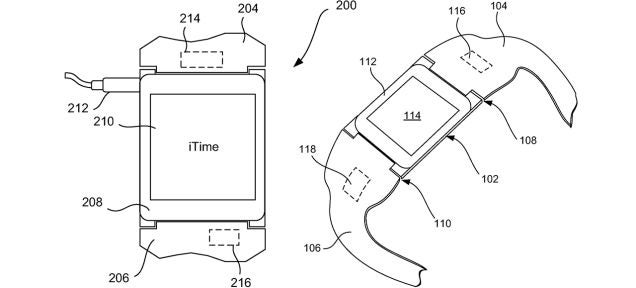The Apple iphone3g
 Phone 3G's back featured a redesigned plastic polycarbonate housing, replacing the aluminum back of the first generation. Buttons were changed from plastic to metal, and the edges of the phone were tapered, providing a better grip. The iPhone 3G introduced the first official color options for the outer casing, with the 16GB version available in black and white.
Phone 3G's back featured a redesigned plastic polycarbonate housing, replacing the aluminum back of the first generation. Buttons were changed from plastic to metal, and the edges of the phone were tapered, providing a better grip. The iPhone 3G introduced the first official color options for the outer casing, with the 16GB version available in black and white.
 Phone 3G's back featured a redesigned plastic polycarbonate housing, replacing the aluminum back of the first generation. Buttons were changed from plastic to metal, and the edges of the phone were tapered, providing a better grip. The iPhone 3G introduced the first official color options for the outer casing, with the 16GB version available in black and white.
Phone 3G's back featured a redesigned plastic polycarbonate housing, replacing the aluminum back of the first generation. Buttons were changed from plastic to metal, and the edges of the phone were tapered, providing a better grip. The iPhone 3G introduced the first official color options for the outer casing, with the 16GB version available in black and white.
The dimensions of the iPhone 3G were slightly larger than those of the original iPhone. It was 116 millimetres (4.6 in) high, 62 millimetres (2.4 in) wide, and 12 millimetres (0.47 in) deep, compared to its predecessor, which was 110 millimetres (4.3 in) high, 61 millimetres (2.4 in) wide, and 12 millimetres (0.47 in) deep (HVGA) resolution at 163 ppi, with scratch-resistant glass sitting on top of the display. The capacitive touchscreen was designed for a bare finger, or multiple fingers for multi-touch sensing.
The device featured the same sensors as its predecessor. The proximity sensor (which deactivates the display during calls when the face is near) was repositioned to save battery power and to prevent inadvertent inputs from the user’s face and ears. An ambient light sensor was included to adjust the display brightness for different lighting conditions, which helps save battery power. A 3-axis accelerometer was included to sense the orientation of the phone and change the screen accordingly, allowing the user to easily switch between portrait and landscape mode.
On the rear of the device, the iPhone 3G featured the same fixed-focus 2.0 megapixel camera of its predecessor. It had no optical zoom, flash, or autofocus, and did not support video recording (though various applications became available to allow video recording on the device). The iPhone 3G's operating system also now supported the geotagging of photographs.Apple iPhone 3G adds support of 3G HSDPA fast data and GPS. It has the same screen, camera, OS and memory (8 or 16GB) as the first one, and almost the same design but now will accept any 3.5mm headphones. It will run on the new software version which support third party application thanks to the official SDK.The iPhone 3G came preloaded with the latest version of iPhone OS to offer users the newest and most capable software. The device continued to receive updates to its software for over two years, with major iterations released on an annual basis. However, the phone had access to a decreasing proportion of new features with each update as its hardware became superseded by later models.
At launch in July 2008, the iPhone 3G came preloaded with iPhone OS 2.0. This introduced the App Store, Microsoft Exchange ActiveSync support, Apple’s MobileMe service, and push email support, along with other new features and bug fixes.
In June 2009, iPhone 3G users received the iPhone OS 3.0 software update, which introduced the long-awaited MMS feature, copy and paste, landscape support for more applications, Bluetooth stereo support, and other improvements.
In June 2010, users received the iOS 4.0 software update. Unlike owners of its successor models, users of the iPhone 3G did not gain access to important features included with iOS 4.0 such as multitasking, the ability to set a home screen wallpaper, or Bluetooth keyboard support. However, it did provide access to a unified mailbox feature, homescreen folders to better organise apps, playlist creation, and other enhancements. This update was widely criticized by users of the iPhone 3G for slow performance, though an updated iOS 4.1, released September 2010, improved this problem. However, unlike more modern iOS devices, this update again did not provide iPhone 3G owners with access to important features, in this case the Game Center application.
On November 23, 2010, the iPhone 3G received the iOS 4.2 software update, which included new features such as YouTube voting, and security fixes. However, the iPhone 3G was unable to use many features included in this update, such as AirPlay and Safari Text Search.
The last release of iOS to support the 3G model was 4.2.1, released on November 22, 2010. iOS 4.3, released on March 11, 2011, did not support the iPhone 3G, with Apple discontinuing further updates.[12]
A key enhancement introduced with iPhone OS 2.0, and therefore an important feature of the iPhone 3G, was theApp Store , an iconic way to find and install third-party applications on users' devices. Before this feature was introduced, the only way to install custom applications on the device was via jailbreaking, which is strongly discouraged and unsupported by Apple. There were 500 applications available for download at the launch of the App Store, though this amount has grown dramatically since then.


















